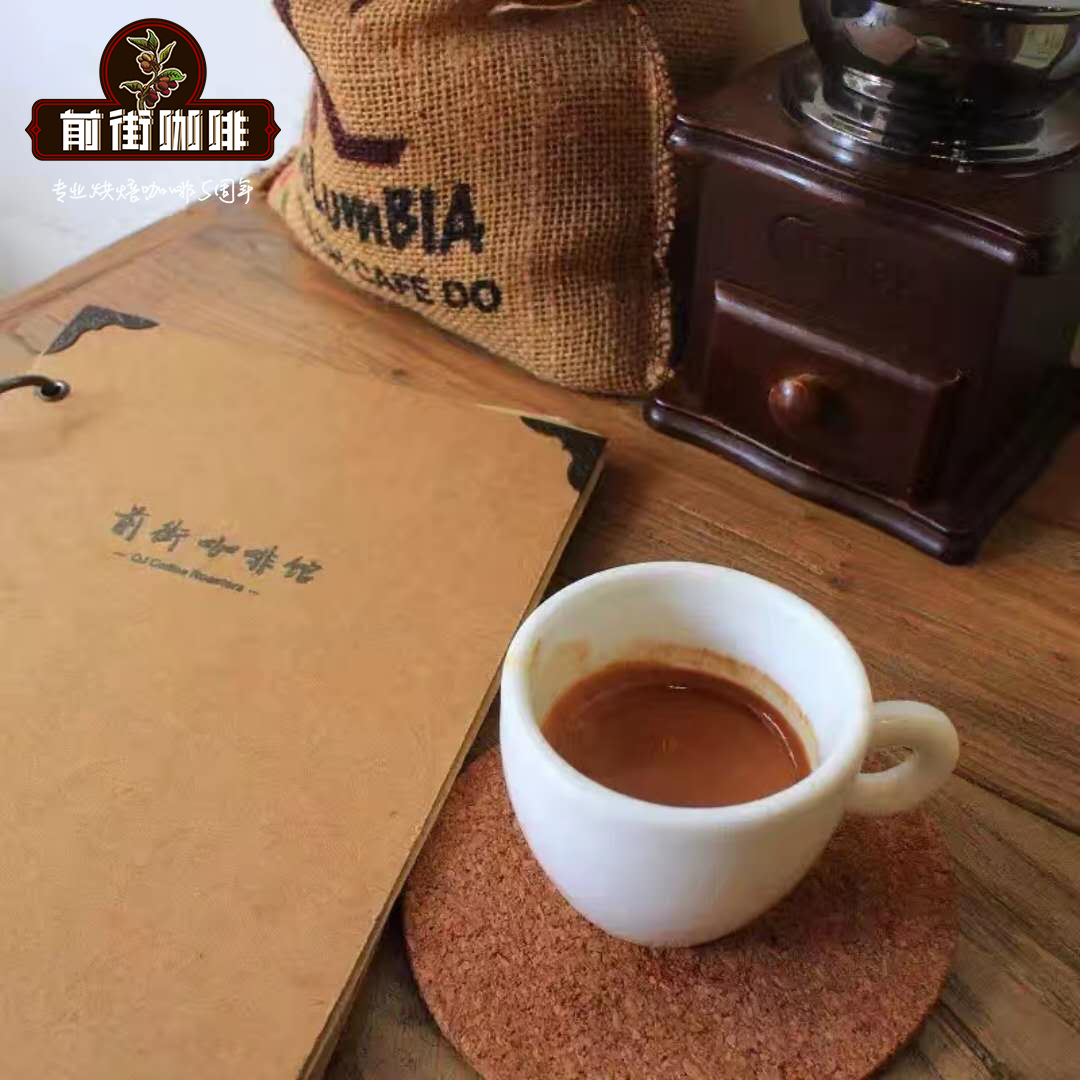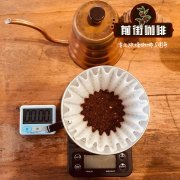Where does tomoca coffee come from in Ethiopia? what is the characteristic flavor of tomoca coffee?

Professional coffee knowledge exchange more coffee bean information please follow the coffee workshop (Wechat official account cafe_style)
Walking footsteps set foot in Africa for the first time and went to Ethiopia!
When it comes to Ethiopia, most people's first impressions are famine.
But in fact, the last great famine was 30 years ago. In Ethiopia, the problem of famine is not as serious as it was then, and some minor famines occur occasionally because the weather is too dry (such as 2017).
In addition to famine, some people's impression of Ethiopia should be: coffee!
Common hand-brewed products in coffee shops: Sidamo, Yega Chuefei, hand-made, these raw beans are all from Ethiopia, and Ethiopia is also the birthplace of coffee all over the world.
Legend has it that coffee originated in the town of Kaffa in southwestern Ethiopia. One day, when a shepherd was herding sheep, he found that the sheep suddenly became very excited, so he observed the movements of the sheep and found that the sheep became particularly excited only after eating the fruit of a certain kind of tree.
Driven by curiosity, he tried to eat the fruit, got a refreshing effect, and named the fruit after the town where he lived. from then on, coffee came into the life of all mankind.
The best coffee shop in Ethiopia is tomoca Coffee, which was founded in 1953 and is the first Ethiopian company to roast coffee beans with an emphasis on boutique technology. where does the raw material come from? The town of Kaffa, where the coffee is produced, of course!
Starting from the town of Kaffa, gradually collecting beans from Sidamo and other Ethiopian plateau coffee producing areas, why choose beans from the plateau region? Because beans growing in these plateau areas have excellent climatic environment and fertile soil, the sour and aroma of coffee beans are particularly obvious, creating the best flavor of tomoca coffee!
(the true face of TOMOCA coffee)
A small Tomoca store retains a large storage space. The main beans sold are "heavy-baked Arabica mixed beans" and "medium-baked single beans". Occasionally, I have the opportunity to buy light-baked beans. When I take guests shopping, I mainly recommend baked beans, because the flavor is relatively simple!
(tomoca Coffee's small storefront bar)
Happy to buy Ethiopia's best beans, home how to cook the best taste?
Because the coffee utensils at home are still complete, so I have tried a total of:
1. Metal strainer hand punching
two。 Flannel strainer hand flushed, Pegasus bean grinder 3.5 powder
3. Mocha pot (not recommended)
4. French filter kettle (also not recommended)
5. Pot-brewed coffee, Pegasus bean grinder 2.5 powder
I personally tested the above methods, and I like the fifth way to taste coffee in a pot, perhaps because this method is closest to the "coffee ceremony" in Ethiopia.
The so-called coffee ceremony is a unique way of hospitality for Ethiopians. Take a look at a picture first.
(coffee ceremony in the restaurant)
The hostess of the family is responsible for the coffee ceremony, and then put the cup on the short table, first "bake" the raw beans with charcoal fire on the spot, and let the guests smell the incense first, and then boil the water + grind the beans (the real traditional method is to use charcoal fire. Just like the lady in my photo), but because the firepower is so small, the water will boil for a long time, while everyone is waiting, the hostess will light her own herbs. Make incense, let everyone relax and wait, after the water boils, pour the ground powder into the pot, boil for a while, then begin to pour out the coffee, sub-pack it to the guests, the first cup must be the strongest, drink cup after cup, cup after cup, usually need to drink three cups, especially the third cup is the host's best wishes to the guests, must be finished!
Just because the cooking method of pot-brewed coffee is closest to the taste of coffee brewed by local people, and the taste is purer than any other cooking method, according to the recommended powder-to-water ratio written on the package of Tomoca coffee beans, "10 grams of coffee, corresponding to 180ml water, do not use boiling water when brewing, use slightly cooler water to brew, you can retain the taste of coffee."
Although tomoca coffee is the best coffee bean we can bring back to Taiwan from Ethiopia, it can't compete with any traditional coffee shop in Ethiopia when it is brewed.
(coffee from small cafes on the streets of Ethiopia)
When it comes to this kind of roadside coffee shop, it is a small space with a very simple tin roof and super simple pillars, but the coffee made by such a simple shop is surprisingly delicious!
The taste of the coffee is very pure, and you can also get a very sour taste. The small pieces of vanilla attached to the cup are thrown into the coffee, which is quite magical. After the leaves go down and rinse, the coffee has more flavor levels, in addition to the original sour taste. It adds a delicate fragrance, and the power of Huigan is stronger after the entrance, completely beating the coffee I drank in any so-called high-end restaurant!
If you have a chance, you must try!
Important Notice :
前街咖啡 FrontStreet Coffee has moved to new addredd:
FrontStreet Coffee Address: 315,Donghua East Road,GuangZhou
Tel:020 38364473
- Prev

Introduction of Yemeni mocha Coffee description of baking time and flavor of coffee beans
Professional coffee knowledge exchange more information about coffee beans Please follow the coffee workshop (Wechat official account cafe_style) Coffee is a favorite drink of many people. The birthplace of mocha coffee is actually the Arabian Peninsula country of Yemen. This history can be traced back to the beginning of the 17th century, and it has been very long since. However, social unrest and civil war in Yemen have affected Kha in recent years.
- Next

How long is the shelf life of tomoca coffee? how long is it better to drink tomoca coffee correctly?
Coffee workshop (Wechat official account cafe_style) Coffee cultivation originated in East African countries. Ethiopia grew wild coffee 1000 years ago, so we are not surprised that Ethiopians take coffee drinking very seriously. Because of this, Ethiopians still have an etiquette for making coffee at home.
Related
- Detailed explanation of Jadeite planting Land in Panamanian Jadeite Manor introduction to the grading system of Jadeite competitive bidding, Red bid, Green bid and Rose Summer
- Story of Coffee planting in Brenka region of Costa Rica Stonehenge Manor anaerobic heavy honey treatment of flavor mouth
- What's on the barrel of Blue Mountain Coffee beans?
- Can American coffee also pull flowers? How to use hot American style to pull out a good-looking pattern?
- Can you make a cold extract with coffee beans? What is the right proportion for cold-extracted coffee formula?
- Indonesian PWN Gold Mandrine Coffee Origin Features Flavor How to Chong? Mandolin coffee is American.
- A brief introduction to the flavor characteristics of Brazilian yellow bourbon coffee beans
- What is the effect of different water quality on the flavor of cold-extracted coffee? What kind of water is best for brewing coffee?
- Why do you think of Rose Summer whenever you mention Panamanian coffee?
- Introduction to the characteristics of authentic blue mountain coffee bean producing areas? What is the CIB Coffee Authority in Jamaica?

